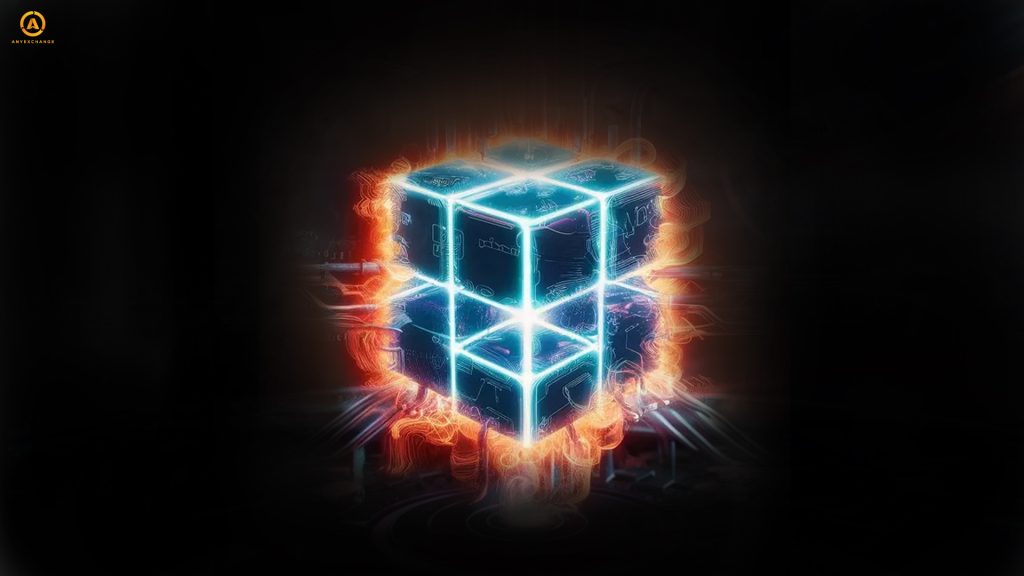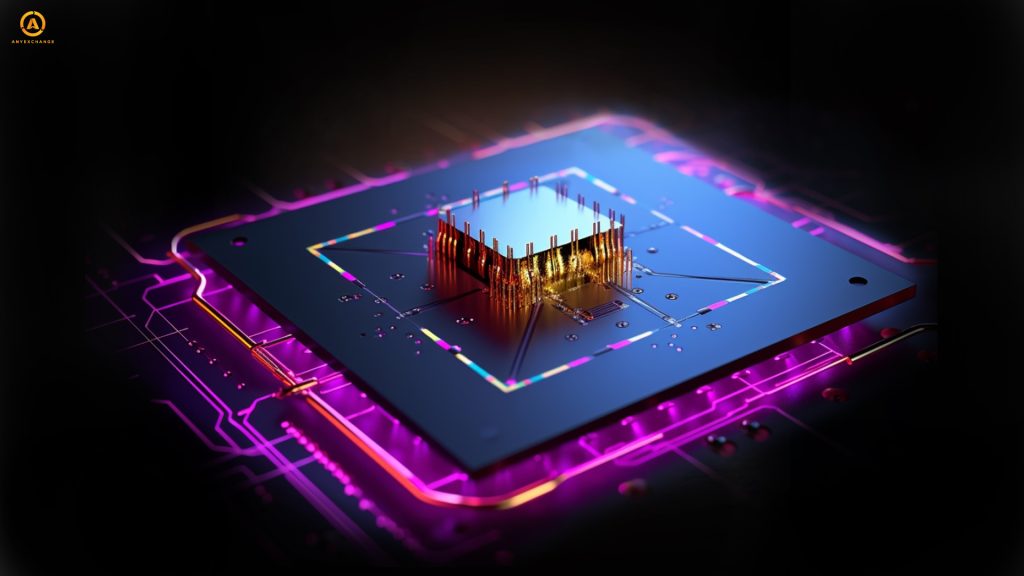
Introduction
The relevance and popularity of bitcoin, cryptocurrencies and the whole blockchain technology is based on three pillars: Decentralisation, anonymity, security. There are also other advantages of these technologies, but these are the main ones.
Anonymity is achieved through cryptographic encryption. Decentralisation – lack of leadership, because it requires control over 51% of computing power or ownership of 51% of the network tokens, which is extremely difficult, if not impossible to achieve. Security: Blockchain cannot be hacked. Since its inception (2009), in the last 15 years, blockchain has never been hacked, although there have been many attempts.
But technology is moving forward, and various innovations are emerging, such as quantum computers. Quantum computers are computers that have power and computational algorithms many times more powerful than conventional ones, and they have the potential to crack cryptocurrencies.
Can they hack into a secure network? Is blockchain security in the face of quantum computing – powerless? And decentralisation and anonymity? Are there any technological innovations to strengthen cryptocurrencies against quantum threats? And how are quantum technologies and cryptocurrencies even related! This is what our article will be about.
1. An overview of quantum technologies and their potential

Quantum computers — hundreds of times more powerful than conventional computers. They will be able to complement the existing IT field. In conventional binary computers, one bit is either 0 or 1, but a quantum computer’s bit (a qubit) contains both 0 and 1 at the same time, which speeds up and increases the power of such technologies. This will accelerate machine learning, perform tasks faster and develop AI better. They will also be faster at cracking and picking encryption keys.
While powerful servers or PCs will take thousands of years to crack the cryptography in crypto algorithms and get the key to crypto, cube computers will take minutes. And this is despite the fact that their potential has not been fully explored. In IT this industry is developing fastest, if now there are only a few pieces, in 2030 there will be 5,000.
But if they can crack encrypted information, will they be able to crack databases and blockchain encryption? – Yes, the threat of quantum computing to cryptography is a very real one.
It takes power in the millions of qubits to crack the blockchain. The most powerful quantum computer in the world has a power of only 1,180 qubits. But by 2030 their total number of such machines should be 5000 or more. So their total power will be 5.9+ million qubits. That could be enough to crack the blockchain. Say Bitcoin or the anonymous cryptocurrency Dash.
If any of these networks can be hacked, it will only be a matter of a couple of years before Etherium, the Tron blockchain, etc. can be hacked. – is only a matter of a couple of years. So there is no future for cryptocurrencies in the era of quantum computing? – No, it’s not quite like that.
2. Theoretical basis of threats from quantum computers.

To hack a blockchain, you need to control 51% of the power. If the total power of one pool of miners is 51% – all transactions will be approved by this pool. Only their approval will determine whether the transaction will be included in the blockchain or not. In addition, they will have the ability to completely rewrite the entire pre-existing blockchain.
In 2024, no one had that kind of power, not even BlackRock, which was buying up the largest mining pools. But with kubit technology, that capacity will be available. This could threaten the security of cryptocurrencies. Almost any mining pool of 1000 participants with quantum computers will have such power that will exceed the power of all other mining pools.
So the impact of quantum computers on financial security will be huge and detrimental? No, because blockchains are evolving too, and they are already developing strategies to protect cryptocurrencies from quantum attacks.
Protection against quantum decoding is provided in the blockchain even by its creator. To rewrite the blockchain, you need to either decrypt all hashes and hash sums (numbers and information in the blocks of the blockchain) and change the information in them. But decrypting a hash is impossible.
Another option is to change the hashes of 51% of the participants. But at the first check, the computer with false information will be disconnected from the network, regardless of its power. PoS, PoW and other protocols have such a protection mechanism. So you need to change the information on 50% of the blockchain media at the same time. But they are distributed all over the world. In addition, mining using qubit computers will be less efficient than modern mining.
Quantum security research confirms that the qubit technology will not bring about the end of the cryptocurrency era.
In any case, the threat is real, and news of a possible hack will lead to fluctuations in the crypto exchange rate, which scammers and speculators will take advantage of. So how do you counter this? Through our cryptocurrency exchange AnyExchange. Here you can check the current cryptocurrency exchange rate regardless of the market situation.
3. Existing cryptographic algorithms and their vulnerabilities
At the moment, qubit computers and technologies do not pose a threat. The development of quantum computing is now at its dawn and its impact on cryptocurrencies is unknown. So the threats are real.
As pointed out earlier, quantum computers will not put an end to crypto. Besides, it would take all the computing power of the world’s quantum computers to hack even one network. But even then, it won’t happen, because of cryptocurrency algorithms. So the threat of quantum computing to crypto exists? – Yes, it does.
Even just one quantum computer with a couple of “ASIC” cards will be more powerful than any other pool, and thus able to promote false transactions. Besides, blockchain is not only about crypto.
The longer the address, the more options there are to decrypt the password (key) and the harder it is to decrypt. If the key length is only 1 bit – there are 2 possible variants, if 5 bits – 32, etc. If 20 bits – there are more than a million possible combinations. In Bitcoin the minimum key length is 128 bits, in other cryptocurrencies up to 256. Ordinary computers will not be able to find the key even for thousands of years, and cubic computers will not be able to find it in a few minutes. So how to protect private information? Cryptocurrency protocols will have to be updated for the quantum era.
Precautions against quantum attacks are already being developed. Attempts to create quantum-resistant blockchains are already underway. The solution is algorithms with multi-level encryption and with mathematical structures. With such innovations, it will be problematic for a qubit machine to break the cipher. Difficult but possible, however, breaking bitcoin encryption for conventional computers is also possible, albeit over thousands of years.
Projects to create quantum-resistant blockchains have led to the emergence of the cryptocurrency lattice. In this case, a lattice is a set of points in a multi-level space. The dots have properties based on which a cipher is created, which is less vulnerable to quantum computing.
Other developers are developing new cryptocurrency algorithms. Their essence is to create a blockchain that will not depend on quantum computing. New cryptocurrencies will function on this new blockchain. This seems too complicated and expensive for cryptocurrencies, but to create the SOLANA blockchain, they came up with a new encryption language, Rust.
The new SHA-512 hashing (encryption) algorithm can provide quantum stability for cryptocurrency algorithms. This is 512-bit encryption and it is less susceptible to quantum attacks.
In fact, any new encryption algorithm or increase in key length, will make the blockchain safer and more secure, but not only against quantum attacks. Thus, the role of quantum cryptography is to better protect cryptocurrencies.
4. Promising technologies and projects
Quantum computers even now exist in numbers of a few, but they have already been called a threat to cryptocurrencies. After all, they will, in theory, be able to break the cipher of some blockchains.
Both the above methods and fundamentally new methods can be used for protection. For example, quantum encryption or post-quantum cryptography.
Quantum encryption is a method of protecting the transmission or exchange of data by increasing its secrecy, relying on quantum physics techniques.
Example:
In a telephone conversation, you dictate your banker your bank card number and CVV code. But if your communication channel is hacked and an intruder hears the phone conversation, he can steal your funds, because he will know the secret numbers of your card.
If you use this type of encryption – in case of hacking the communication channel, the transmitted information is distorted. So neither the banker nor the intruder will know your card number, but you will definitely not lose your funds. And for a financial transaction, you will only need to call again.
A phone call is a secure communication channel. And the card number is your address and digital signature, which can be forged to create another transaction. So you send the coins not to buy, but directly to the attacker’s account. And the banker is a miner who will simply inсlude the transaction in the blockchain.
In theory, the cube computers will use communication channels with similar characteristics. It is possible that those who hack the channel will get false information and those who use it will get valid information.
Thus, we can conclude that quantum encryption will have a positive impact on cryptocurrencies, making them more secure. And security is one of the reasons for the popularity of cryptocurrencies.
5. Adaptation of cryptocurrency systems to quantum technologies
The prospects of quantum-resistant cryptocurrencies are not fully understood, but such an innovation has attracted even Vitalik Buterin, the founder of Etherium and the third man in crypto. Cubit technologies are not a potential threat to cryptocurrency, they are more like a demonstration of future threats. In 2014-2016, the main problem of crypto was scalability, which is how L2 solutions, SegWit, etc. came about. Innovations in quantum cryptography can make blockchain and its algorithms – more secure.
One of the largest international banks in the world, which specialises in brokerage and financial services, JPMorgan, considers the quantum threat a serious problem. Together with Ciena, they have developed a quantum channel for key transmission. The optical channel, will be built on top of the Liink blockchain. The speed of the channel is up to 800 Gbps and have all the advantages of quantum technology.
Their idea protects not all nodes of the blockchain, but only the most important ones. The Liink blockchain was invented as a network to exchange data between banks and improve the international payment systеm.
Vitalik Buterin proposed a more innovative and complex idea. Unique smart contracts will be used to store crypto-assets, and a special token standard ERC-4337 has already been developed for this purpose. Vitalik Buterin says that this is how crypto wallets will turn into smart contracts. The idea is also called abstract accounts.
To implement the idea, it is necessary to conduct a hardfork of all blockchains. The essence of the hardfork is the transition to new software. The founder of Efirium proposed to confirm the Seed-phrase through the new L2 STARK technology and restore his cryptocurrency wallet. Many cryptocurrency enthusiasts were distrustful of the idea, but Vitalik is sure that if you use his idea – only a few will lose their funds.
Conclusion
Quantum technology is a threat to crypto. Although it will not put an end to the era of cryptocurrencies, it is a threat to be reckoned with. It also needs to be prepared for and countered now. Before bitcoin technology emerges on an industrial scale. There is no single solution to fully adapt cryptocurrencies to quantum technologies. But there are basic and the simplest:
The potential of qubit technology and blockchain is unexplored. There are many solutions aimed only at eliminating quantum computing as a threat. But a more innovative and promising idea is the introduction of cryptocurrency networks with post-quantum cryptography. They will not try to supplant cubit machines, but will switch to quantum cryptography themselves. There are a lot of reservations and subtleties associated with this, but after reaching a compromise in them, crypto will get a new stage of development and blockchain will become more secure





